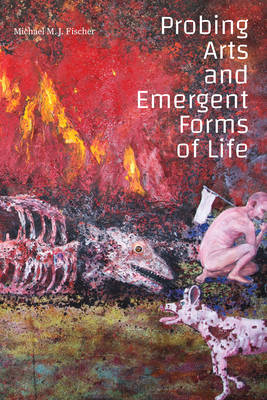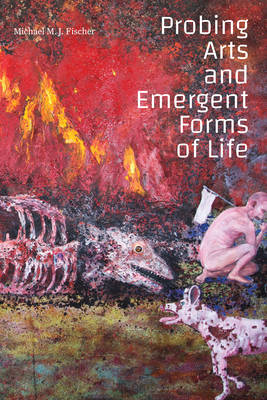
- Afhalen na 1 uur in een winkel met voorraad
- Gratis thuislevering in België vanaf € 30
- Ruim aanbod met 7 miljoen producten
- Afhalen na 1 uur in een winkel met voorraad
- Gratis thuislevering in België vanaf € 30
- Ruim aanbod met 7 miljoen producten
Zoeken
Omschrijving
In Probing Arts and Emergent Forms of Life Michael M. J. Fischer calls for a new anthropology of the arts that attends to the materialities and technologies of the world as it exists today. Fischer examines the work of key Southeast and East Asian artists within the crucibles of unequal access, geopolitics, reverberating past traumas, and emergent socialities. He outlines the work of artist-theorists---including Entang Wiharso, Sally Smart, Charles Lim, Zai Kuning, and Kiran Kumar---who speculate about changing the world in ways that are attuned to its cultivation, repair, and rethinking in the Anthropocene. Their artistic vocabulary not only undoes Western art models and categories; it probes the unfolding future, addresses past trauma, and creates contested, vibrant, and flourishing spaces. Throughout Indonesia, Korea, Singapore, Thailand, and Vietnam---and from Kumar's experimental dance to Kuning's rattan and beeswax ghost ships to Lim's videography of Singapore from the sea---Fischer argues that these artists' theoretical discourses should be privileged over those of the curators, historians, critics, and other gatekeepers who protect and claim art worlds for themselves.
Specificaties
Betrokkenen
- Auteur(s):
- Uitgeverij:
Inhoud
- Aantal bladzijden:
- 336
- Taal:
- Engels
- Reeks:
Eigenschappen
- Productcode (EAN):
- 9781478017059
- Verschijningsdatum:
- 26/05/2023
- Uitvoering:
- Hardcover
- Formaat:
- Genaaid
- Afmetingen:
- 152 mm x 229 mm
- Gewicht:
- 680 g

Alleen bij Standaard Boekhandel
Beoordelingen
We publiceren alleen reviews die voldoen aan de voorwaarden voor reviews. Bekijk onze voorwaarden voor reviews.











